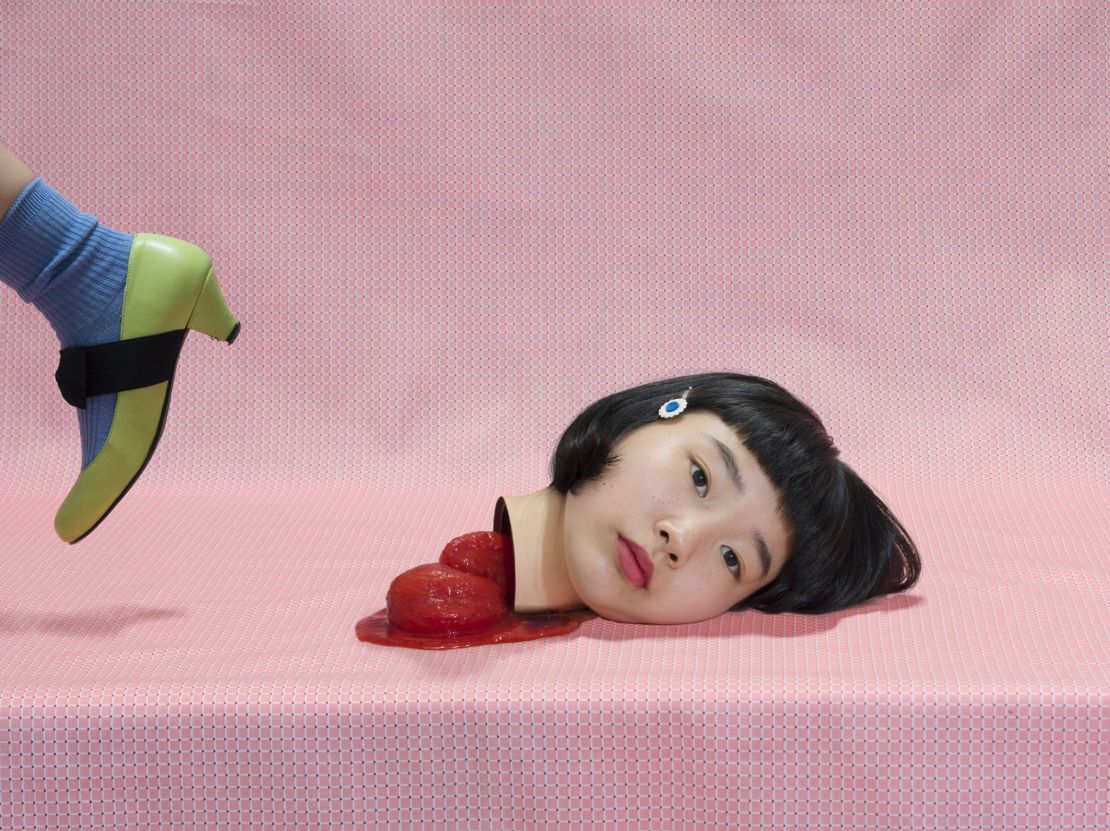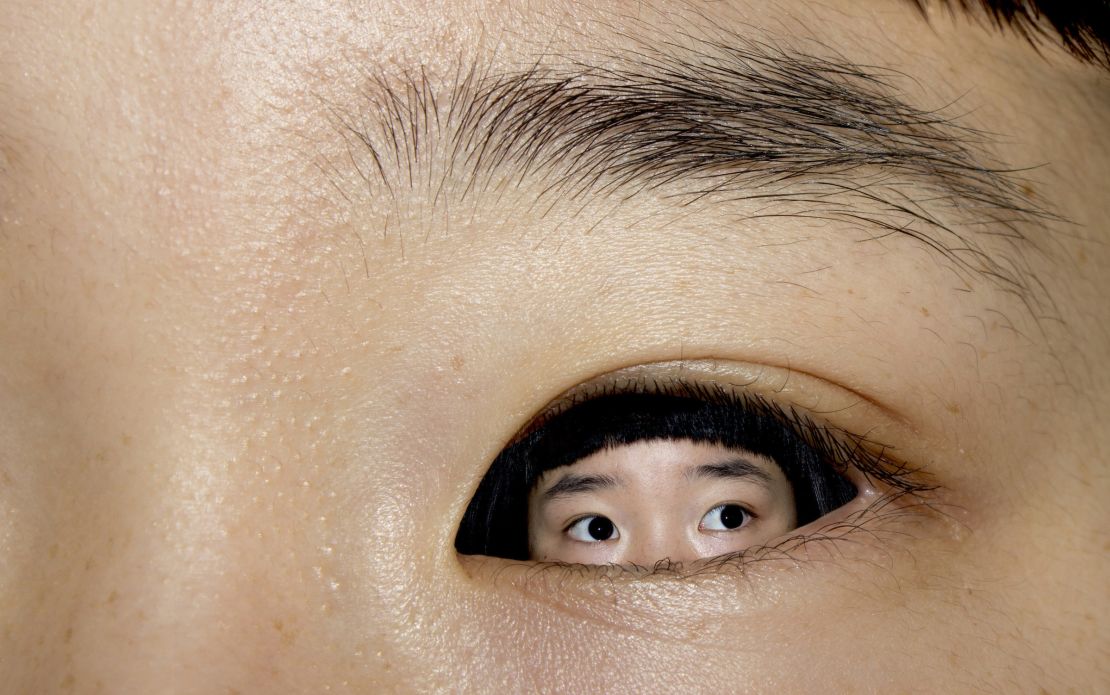Story highlights
Photographer Izumi Miyazaki combines off-color humor and evocative compositions
August 19 is World Photo Day
As an only child growing up in Japan, photographer Izumi Miyazaki often let her imagination roam free.
Armed with her mother’s silver Pentax, the young teen developed a peculiar approach to capturing the world around her.
Surreal, grotesque and often humorous, her self-portraits seem to turn “kawaii” – the Japanese descriptor for all things cute – on its head.
In one photo, she’s beheaded – her clumpy insides spilling onto a pink backdrop. In another, her signature black bob is obscured by two slices of bread.
Appreciation for Miyazaki’s off-beat style is growing, with thousands following her Tumblr account. And she recently finished her first solo exhibition at the Wild Project Gallery in Luxembourg.
Below, the Tokyo’s Musashino Art University graduate discusses her work with CNN Style.
What was it like growing up in Japan?
It’s hard to describe because I don’t have anything to compare it to. But what I believe is that young Japanese people love to be part of a group – or even be classified in a category.

Even when they want to be original and stand out from the crowd, they tend to search for a group of similar people.
Personally, I am a little bit afraid to be cataloged or categorized. That is why I always try to be myself and don’t mind being alone. But perhaps I am in a group as well, without knowing it?
Does photography run in the family?
Actually, no. My grandfather used to take family pictures, but they weren’t very good. My mom tried too, but she wasn’t much better. When I held the camera for the first time, it felt very natural to me.
How do your photos reflect life and culture in Japan?
They probably reflect life in Japan more than I think they do. But that’s not my intention. Although, I really like food – especially Japanese food – so you might see a lot of Japanese snacks in my photos.
I don’t think my pictures show my personality. Or at least, if they do, I am not conscious of it. I take self-portraits and I am my own model. And yet, I feel that this model is another person.
How do you usually construct the scenes in your photos?
First, I imagine what I want to do. I usually come up with ideas from everyday life. When I read books, watch TV, talk with friends … ideas just come up.
For example, I imagined that I wanted to cut my hair with an office paper cutter (Hair Cut, 2016) and I envisioned myself standing on a rice ball (Rice Ball Mountain, 2016). I think about composition carefully too.
Does Japanese culture promote or inhibit creativity?
Yes, I think Japanese culture promotes creativity. I think Japanese people yearn for Western things, which unintentionally creates this original culture that I’m really interested in.

How does social media influence your work?
It’s difficult for me to answer this but thanks to social media, I can see so much variety and many, many things from all over the world. It inspires me to make something.
How has your photography evolved over time?
I take great care of the choice and balance of colors in each picture. The main evolution is my lighting technique and the use of Photoshop. When I was starting out, I took pictures of what I saw and didn’t make any changes to them. Now I compose the entire set-up myself and Photoshop has become crucial for my work.
How would you describe your photography style?
That’s hard … I don’t feel that I have a style. I try to do what I want do, when I want to do it. I don’t really have a guideline or any steps that I like to follow. It is likely that one could classify me into one kind of style or another, but I just try to work in the moment.
Your photos feel quite cinematic. Where do you find your inspiration?
Yes, there is some truth in this remark. Since my pictures are set up, this undoubtedly adds a cinematographic dimension. I really love the cinema – I love films like Amélie.
I also look towards American photographer Alex Prager as inspiration because she composes all her images, staging models and creating film-like scenes. I also like the work of Japanese photo artist Miwa Yanagi, where all the women ironically have the same expression and seem void of personalities.
What do you hope that viewers take away from your photos?

I have no special message or purpose when I take photos. I only hope that visitors approach my photography with an open mind – with as much freedom of thinking as I try to have when I create a picture.
Where do you hope to be in the next five years?
I hope to have a bigger house, closer to the train station! But more seriously, I don’t know at all. To be honest, I don’t have a clear picture of what I would like to be or what I would like to achieve. I guess we will see.







